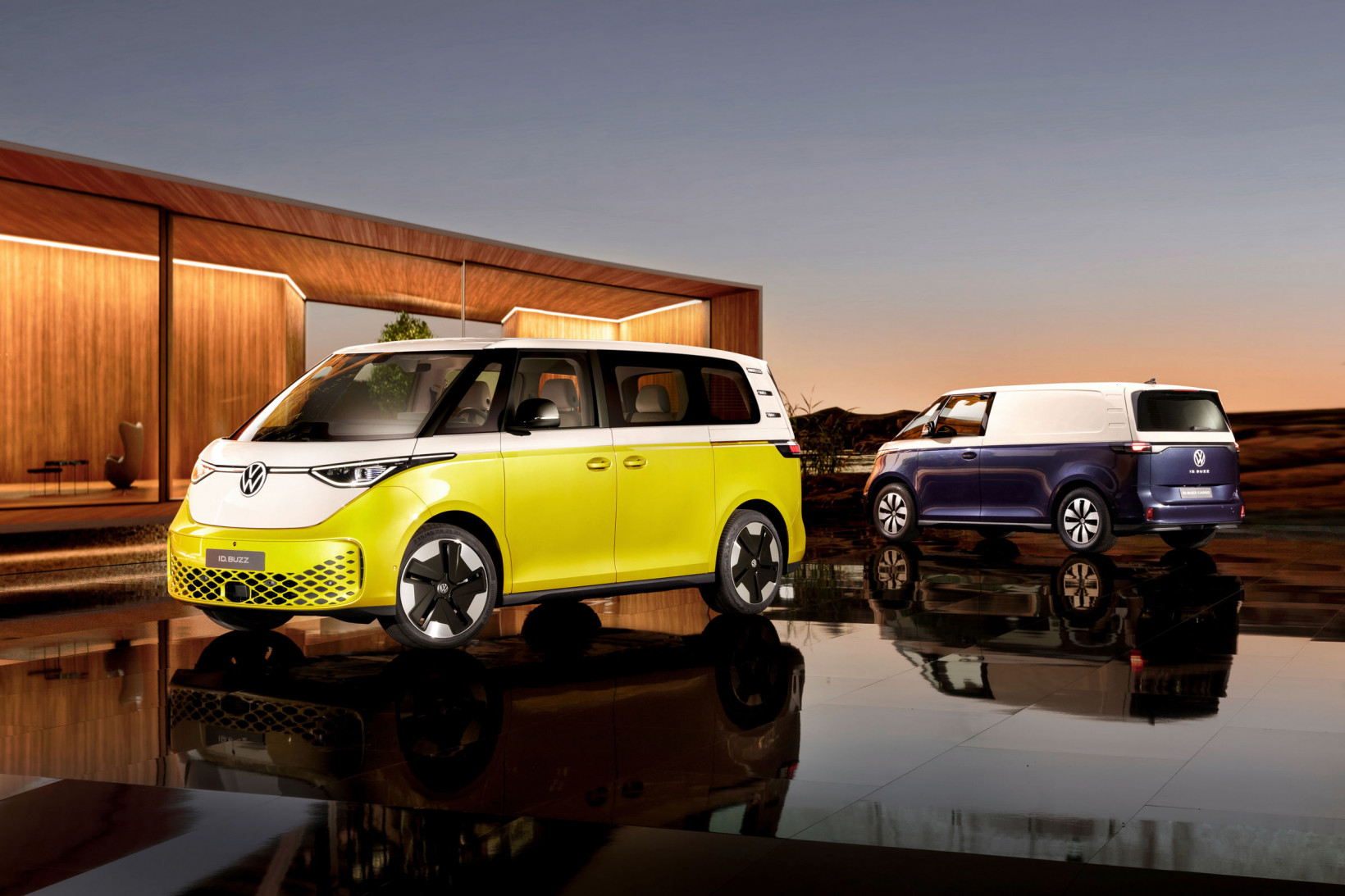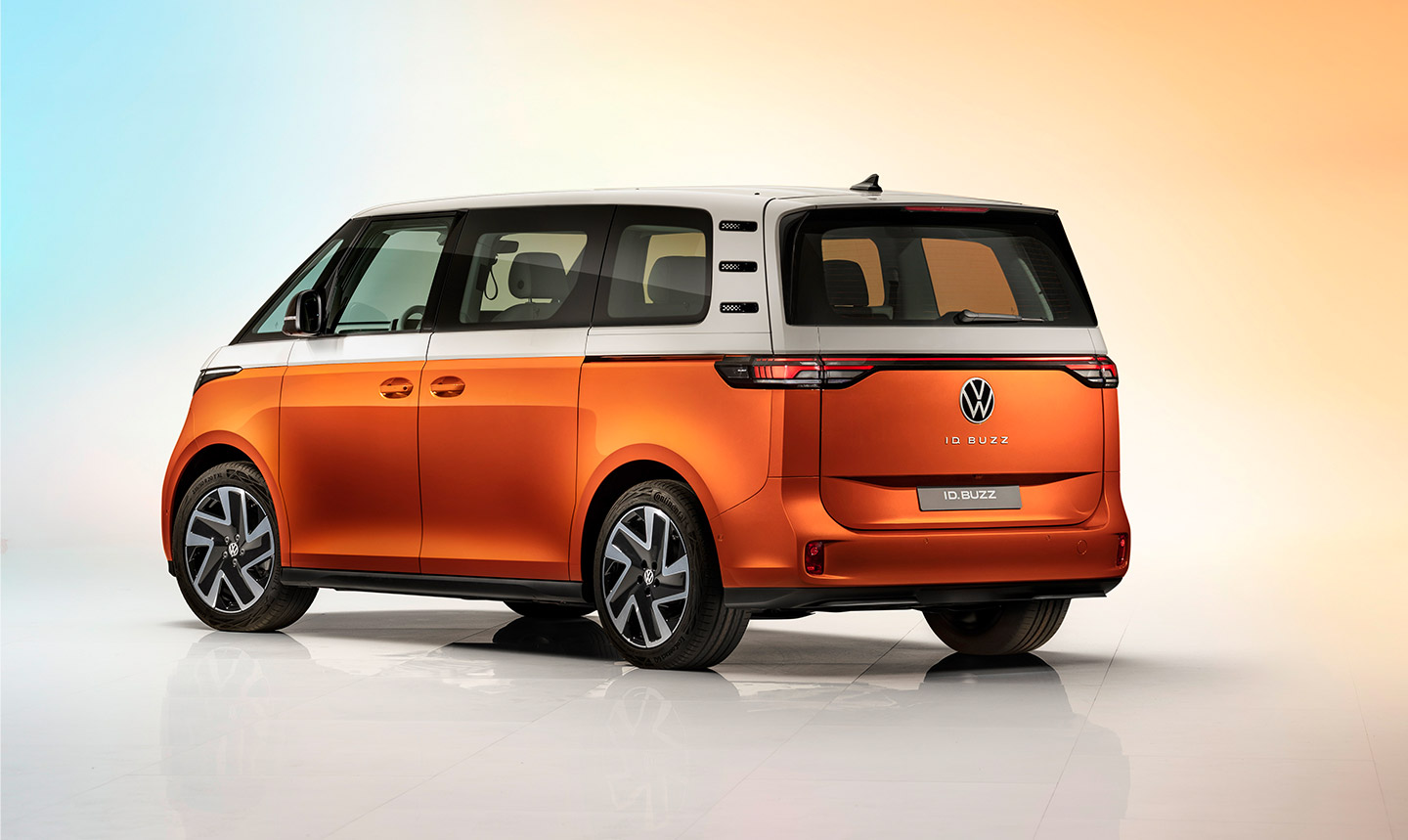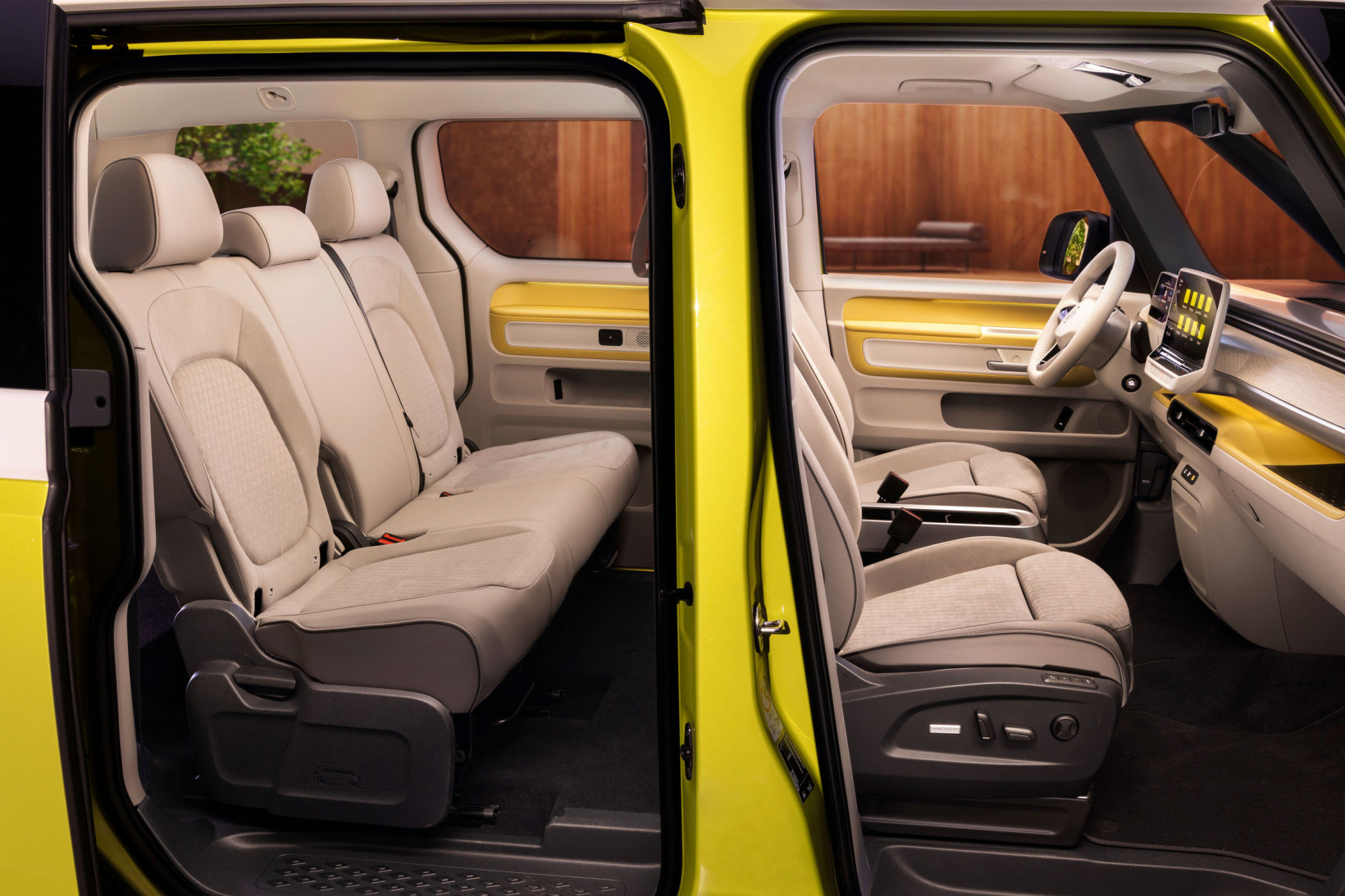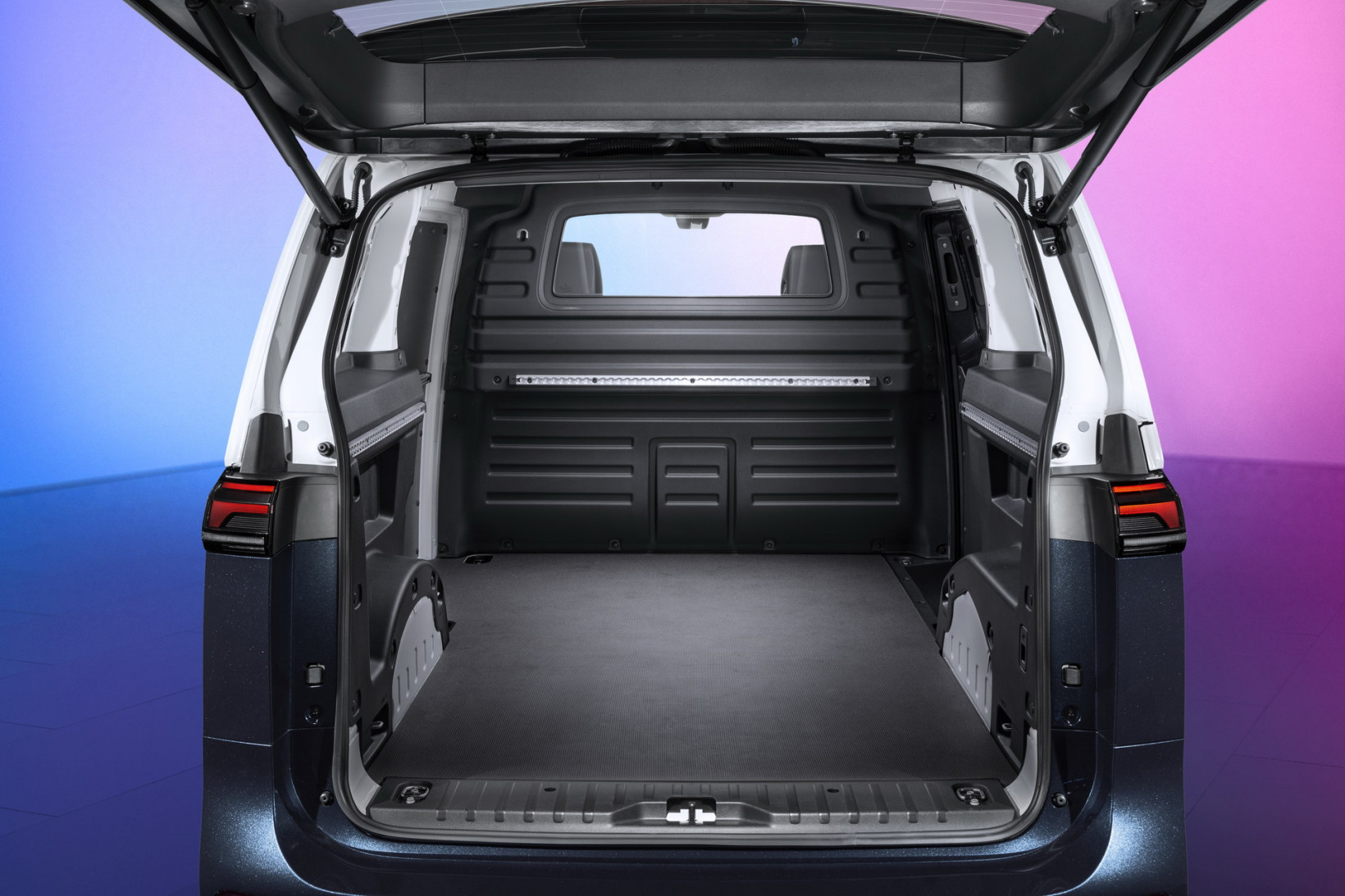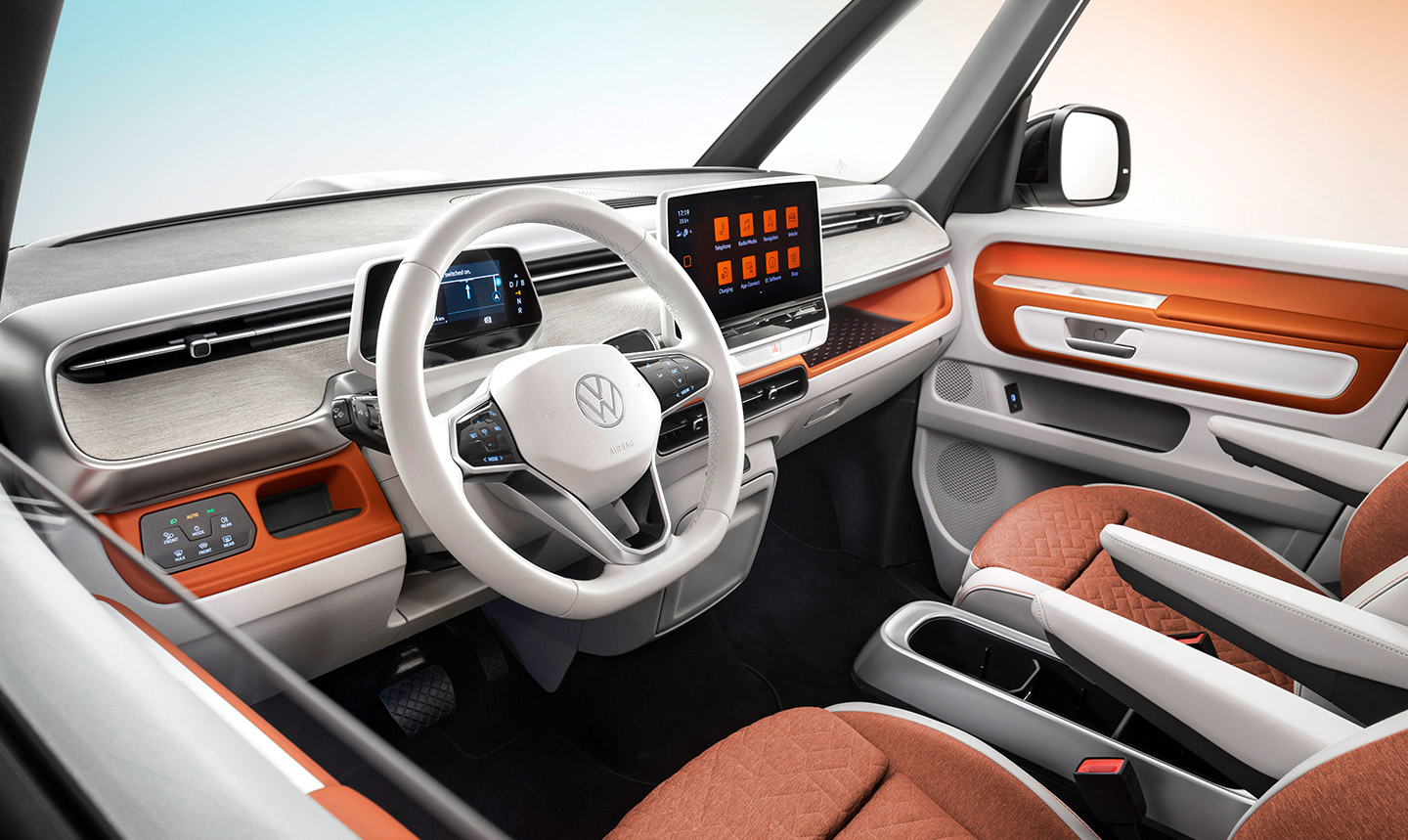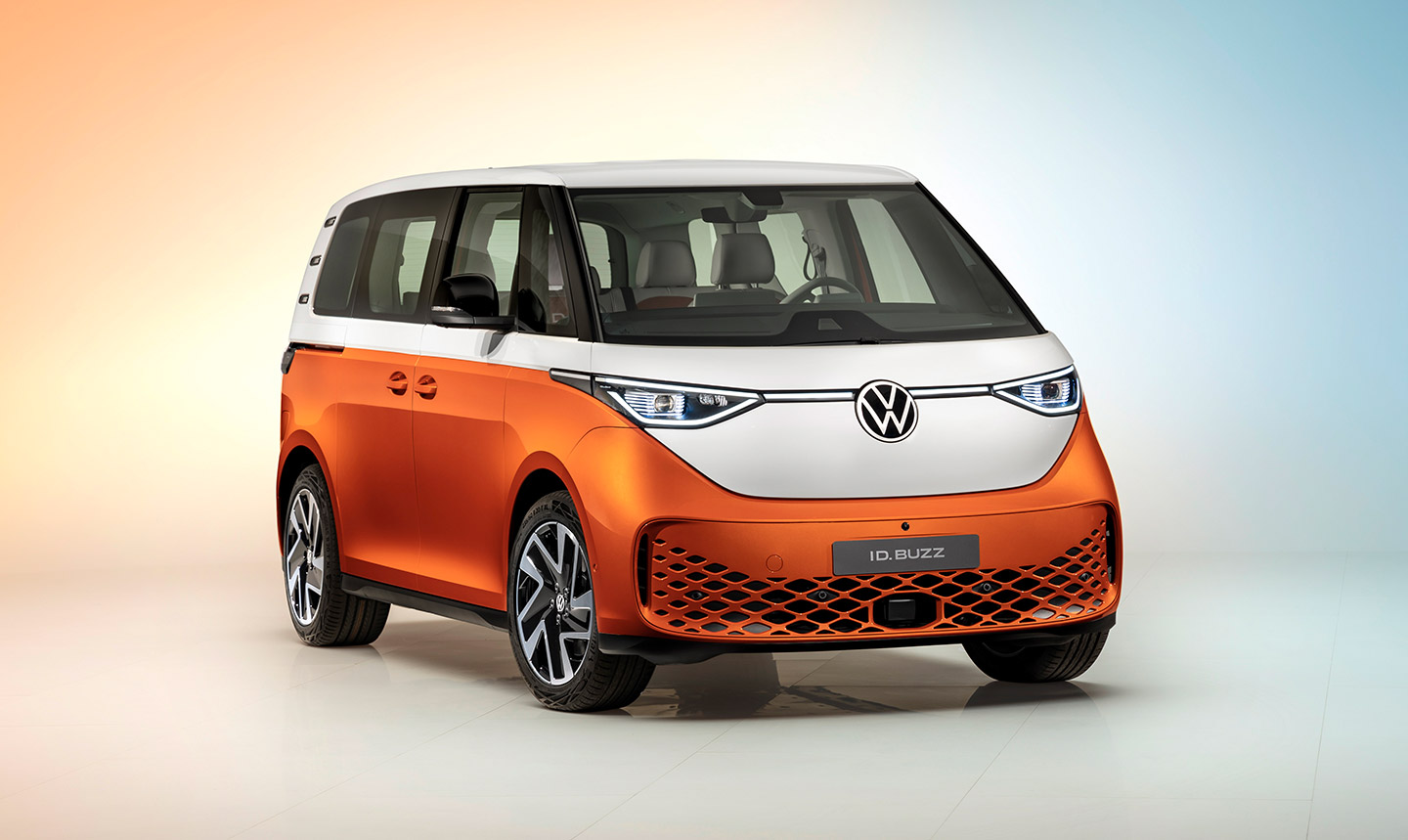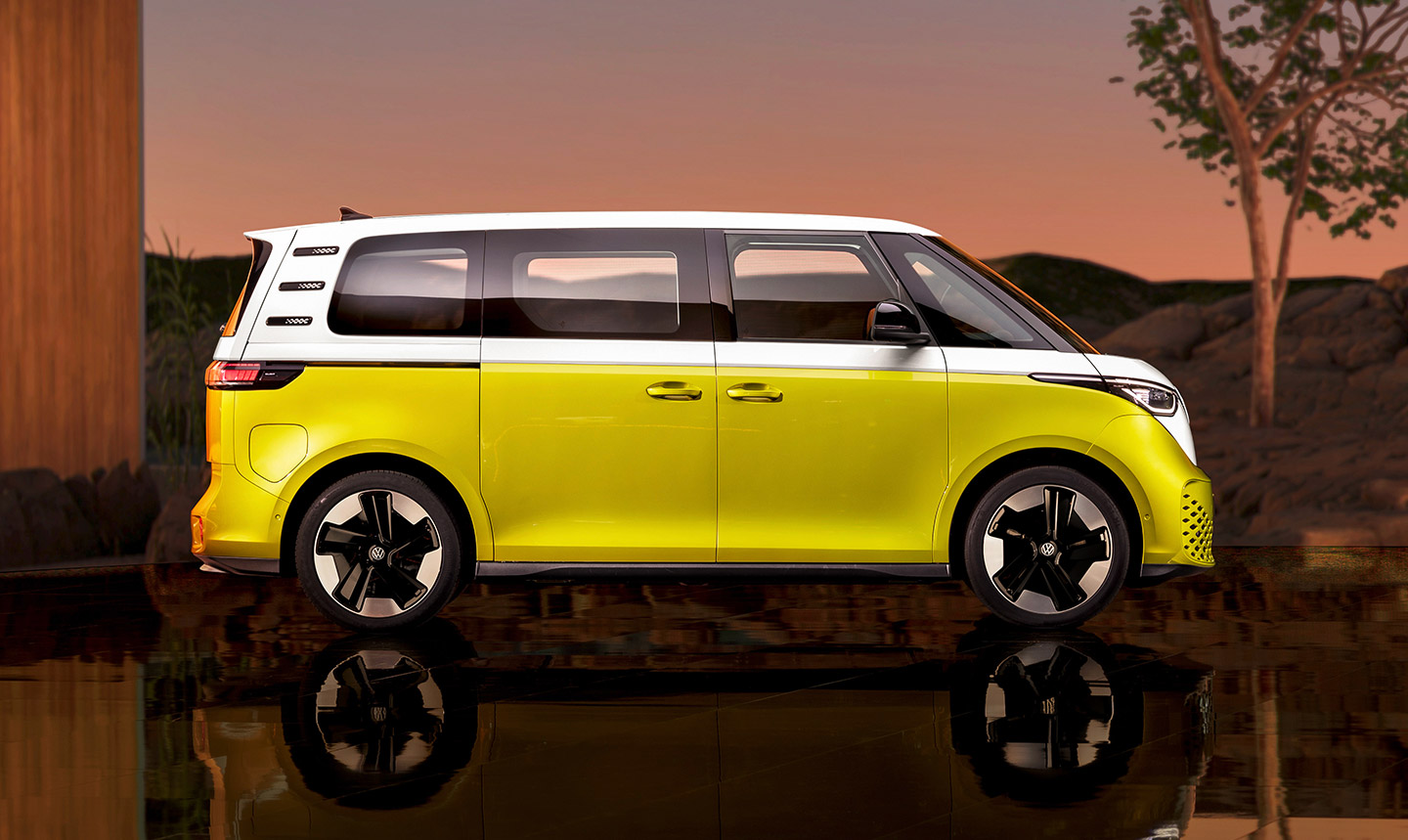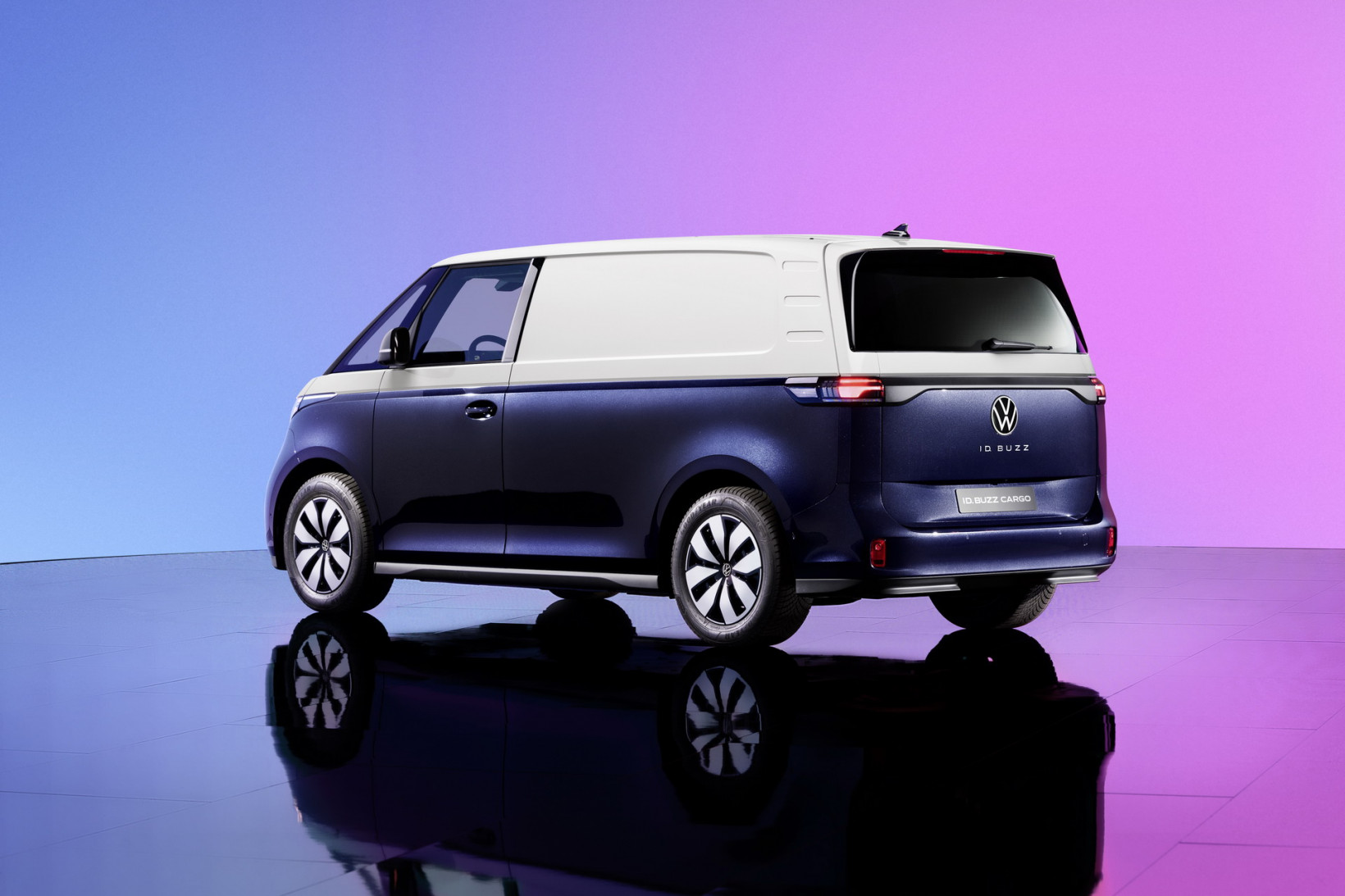Now, the VW ID Buzz has finally made its debut as an all-electric, multi-purpose vehicle (MPV) and cargo van. Was it worth the wait? ABSOLUTELY. Design-wise the ID Buzz is clearly channeling the retro DNA of the original T1. Notice the dual-tone paint scheme, V-angled face, short front and rear overhangs, and generous wraparound glasshouse. And bask. Bask in its glory. For its modern makeover, we can see its shape is refined with sharper elegant lines, while the original round headlights have been replaced by slimmer ones. Plus, the rear features LED taillights are connected with a full-width light strip. The European version of the ID Buzz van will seat five people at launch, with six- and seven-seater versions coming later. If you want to jam the van with stuff, the second row of seats can be folded down, providing a 2,205-liter load capacity. Unlike the regular model, the innards of the ID Buzz Cargo (pictured below)are substantially different. This has three seats in the front, as opposed to two in the other vehicle. What this means is the rear of the Buzz Cargo is opened up for, well, cargo. And there’s a good 3.9m³ of space for it. Focusing back on the standard Buzz, the interior of Volkswagen’s new EV is a clear break from the past — mainly because it’s stuffed with modern consumer tech. There’s a 10-inch digital cockpit instrument cluster, accompanied by a 10-inch (12-inch if you pay extra) touchscreen infotainment system. To further claim its place in the modern era, the ID Buzz boasts a selection of connected and autonomous technology. The vans are equipped with “Front Assist” emergency braking, “Lane Assist” lane-keeping, and the so-called “Car2X” — a local warning system, which uses signals from other vehicles and transport infrastructure to alert occupants of road hazards in real time. Customers can also choose two optional extras: “Travel Assist,” which delivers partial automated driving, and “Memory Function” for automated parking on a previously saved route. Performance-wise, the van comes with a 201hp electric motor, which powers the rear axle and enables it to reach a rather limited 145km/h. A 77kWh battery delivers the necessary juice (more battery versions will follow), but there’s no info on range just yet. What’s more striking is the vehicle’s charging features. First off, it supports bi-directional charging, allowing users to feed unneeded energy from the battery into their home network. Plus, the ID Buzz will take advantage of VW’s “Plug & Charge” system, which aims to do away with the hassle of entering payment information or requiring users to carry around charge cards. Instead, all authentication and identification data will be directly exchanged between the plug point and the van, including billing options with VW’s contracted service providers. As for when we’ll get to drive the ID Buzz, the European launch begins in the autumn of 2022, with pre-sales starting in May. The North American Market will see the van in 2024, possibly with some alterations. Those dates can’t come soon enough.
